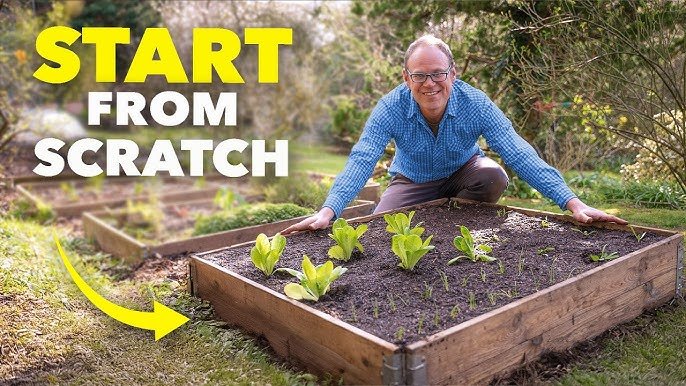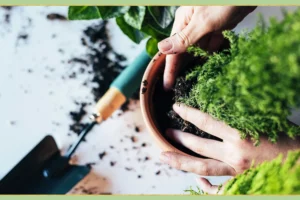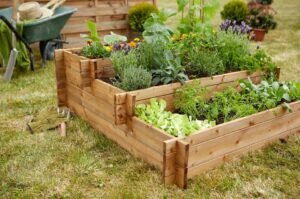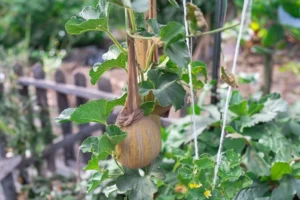Gardening can seem daunting at first. Beginners often feel overwhelmed by the challenges of choosing the right plants, understanding different soil types, and figuring out when to water. But creating a garden doesn’t have to be difficult or expensive. With the right approach and a few practical tips, anyone can create a thriving garden. This article introduces simple gardening techniques that every beginner should know. These tips will help you grow plants with confidence and ease.
Start small
A common mistake among beginning gardeners is trying to do too much at once. A large garden can be difficult and stressful to maintain. Consider starting with a small area on your porch or a few pots. Choose plants that are hardy and simple to care for, such as marigolds, herbs, and leafy greens.
Starting small makes it easier to learn how to create a garden. This also allows you more time to understand your plants and their needs. Once you gain more confidence, creating a garden becomes much easier.
Choosing the Right Soil
A healthy garden starts with fertile soil. Even the best plants struggle in poor soil. If you’re just starting out, a high-quality potting mix is an easy way to ensure your plants get the nutrients they need.
If you’re planting in the ground, check the soil’s pH and nutrient content. To improve its texture and fertility, add compost or other organic matter. Healthy soil allows plants to absorb water and nutrients more easily, reducing the risk of disease and poor growth.
Use mulch to retain moisture
A simple mulching trick can save you a lot of work. Covering the soil with organic matter (such as straw, shredded leaves, or wood chips) can keep the soil moist and even out the temperature.
Mulch also suppresses weeds, saving you time removing them from your garden. In most cases, a 2- to 3-inch layer of mulch around your plants is sufficient. This simple step will keep your plants healthy, even when it’s hot and dry outside.
Water wisely
Many new plants get too much or too little water. To ensure healthy growth, you need to understand their watering needs. For most plants, deep, small waterings are better than shallow, frequent waterings. This helps the plant’s roots penetrate deeper into the soil, making the plant stronger.
Drip irrigation or watering directly at the plant’s roots prevents water wastage and fungal diseases. It’s best to water early in the morning so the leaves can dry during the day. This reduces the risk of fungal growth.
Planting with other plants
A natural way to protect and improve your garden is to plant plants together. Some plants work better together because they repel pests and improve the soil’s nutritional value. Basil, for example, grows near tomatoes, improves their flavor and prevents insect infestations.
Marigolds can also prevent nematodes and other pests from attacking vegetables. By researching the right plant mix for your garden, you can reduce the use of chemical pesticides and fertilizers, keep your garden healthy, and protect the environment.
Reuse Everyday Items
Growing doesn’t require expensive tools. Many household items can be reused in new ways, making gardening easier. Boxes, yogurt containers, and newspapers can all be used to sow seeds. Old barrels and buckets can be turned into planters.
Compost, or natural fertilizer, can be made from anything, even food scraps. Eggshells, coffee grounds, and vegetable peelings are all beneficial for the soil and help reduce waste. Smart recycling not only saves money but also extends the life of your garden.
Prune and deadhead (remove old blooms) every time. By pruning and deadheading spent flowers, plants can thrive and bloom more often. Pruning makes room for new growth and improves air circulation, reducing the risk of disease.
Pruning growing plants prevents them from focusing their energy on seed production and instead focuses on flowering. Simple pruning techniques can make plants look healthier and more attractive.
Keep Pests away
While pest control can be intimidating for beginners, there are simple, natural methods to protect your plants. Neem oil, insecticidal soap, and garlic spray are all excellent options and are also environmentally friendly.
Introducing beneficial insects, such as ladybugs or praying mantises, can also help.
Labels can be replaced with popsicle sticks or old plastic labels. This not only helps you keep your garden tidy but also helps you keep track of when you’ve watered and how much you’ve planted.
Try vertical gardening
If you don’t have much space, vertical gardening can help you grow more plants. Climbing plants, such as beans, cucumbers, and strawberries, can be grown on trellises, wall pots, or hanging baskets.
Vertical gardening keeps plants off the ground, which reduces soil-borne diseases and promotes air circulation. It’s not only aesthetically pleasing but also gives you more space to grow various plants in small spaces and on balconies.
FAQS
How often should I water my garden if I’m just starting to grow plants?
Deep, infrequent watering is beneficial for most plants. Two to three times a week is usually sufficient, but the exact amount depends on the plant type, soil type, and weather. Check the soil for moisture before watering.
Can I start a garden if I’ve never landscaped one before?
Absolutely! Start with easy-care plants like marigolds, flowers, or lettuce. To gradually improve your gardening skills, start small, use high-quality soil, and perform simple maintenance tasks like watering and weeding.
What’s the easiest way to keep pests away from your plants?
Use natural methods like garlic spray, neem oil, or soap to kill insects. Adding beneficial insects and well-growing plants is also a natural way to control pests.
Do I need any special tools to landscape a garden?
No. You can start with simple tools like gloves, a trowel, and a watering can. You can also use egg cartons, yogurt containers, and other everyday items in new ways, for example, as seed or flower pots.
How can I make my garden neater?
Label plants with names and care instructions, keep paths clear, and use raised beds or pots. You can also maximize your space and keep your plants neat by planting vertically.
Summary
Starting a garden isn’t difficult. Starting small, choosing the right soil, watering wisely, using mulch, and being open to creative solutions are some simple gardening tips that can make your garden grow quickly and easily. Remember, you need patience and focus. Becoming a confident gardener takes time, but every plant is different, and you can learn from your mistakes. With these easy-to-follow tips, your garden will flourish and bring you beauty, comfort, and fresh food.




